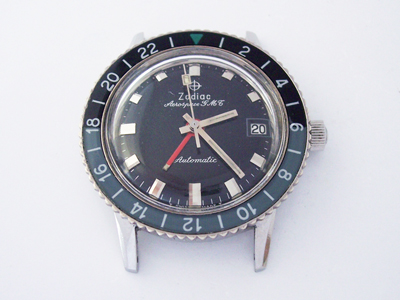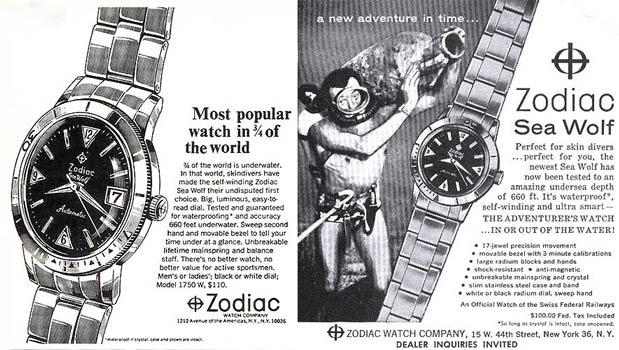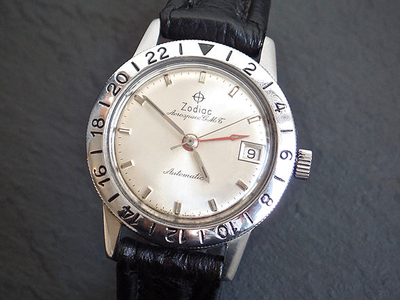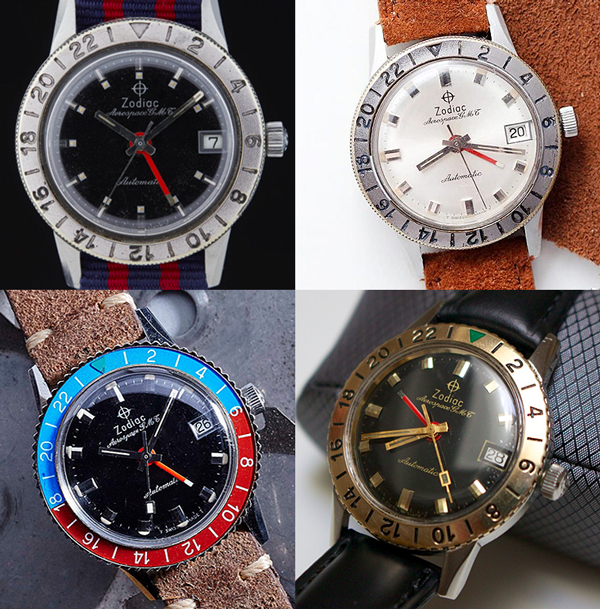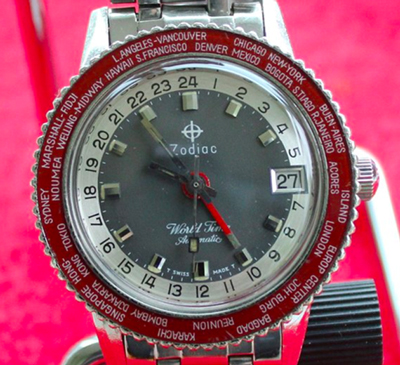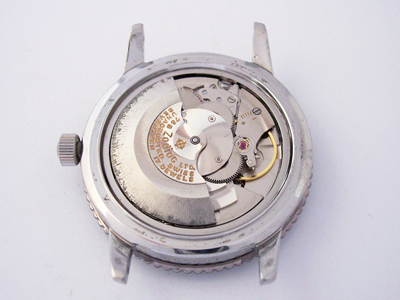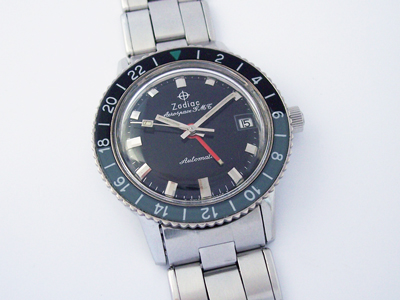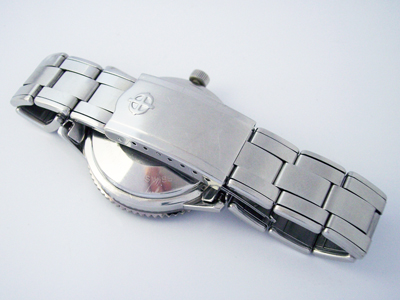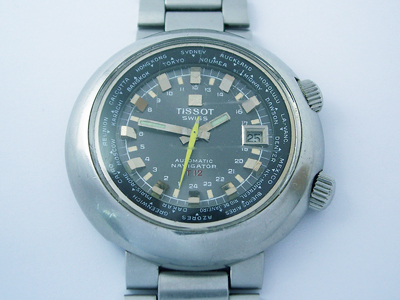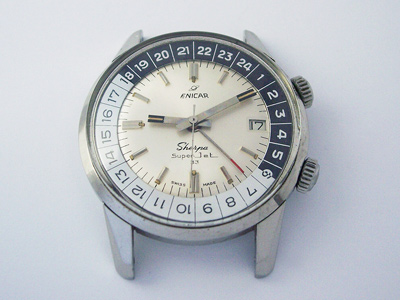Here’s a good looking watch, the Zodiac Aerospace GMT.
(Click pictures to enlarge)
One of Zodiac’s most recognisable vintage watches is their Sea Wolf diver. Introduced in 1953, the Sea Wolf was marketed as the world’s first purpose built dive watch. Early models were pretty basic with water resistance of just 10 ATM (100m / 330ft) but after the watch proved to be a hit, it was upgraded with a more robust crystal, thicker caseback gasket and a more substantial crown and case tube, doubling the water resistance to 20 ATM (200m / 660ft) and making it a more credible divers watch.
Around 1962 with sales of the Sea Wolf growing, Zodiac introduced a Sea Wolf model with a date, the Datographic and also the first Aerospace GMT.
Using essentially the same 35mm case as the Sea Wolf, the first Aerospace GMT featured a bi-directional polished bezel with engraved 24 hr markings and inside was a Zodiac cal. 70-72 with an added 24hr complication. Later models were fitted with the cal. 75 which added a hacking mechanism and for the third generation models, the cal. 75B and cal. 76 added a quickset for the date.
The Aerospace GMT was produced until the mid 70’s and there were quite a few variations released during the production cycle.
From top left above, the second generation continued with the plated bezel but changed all the hands to a baton style and also changed the dial layout, broadening the hour markers and putting a square of lume under the indices. The third generation (top right) changed the dial markers again and subsequently saw the release of models with a two-tone bakelite bezel insert designating night and day (the subject of this post for example).
One of the rarer third generation models had a solid gold bezel, with gold hands and dial lettering (bottom right) and finally, bottom left shows a late third generation model with a rare Pepsi colour scheme.
Just in case that wasn’t enough choice, Zodiac also released a number of World Time variations with a city ring rather than a 24 hr bezel.
As you can probably tell from the first picture, the subject of this post arrived in good condition. The watch was running but the hacking mechanism wasn’t working. Inside the watch is a cal. 75B, one of the later calibres used in the GMT. A 17 jewel automatic calibre with a beat rate of 21,600 bph, the aforementioned hacking mechanism and a date quickset accessed by pressing in the crown.
The movement was in decent condition with just a little tarnish around the edge of the winding rotor. This kind of tarnish is a common sight on vintage watches as any evaporated moisture that makes its way past the gaskets condenses on the coldest part, the winding rotor, the droplets forming on the outer edge as it spins. Being a plated base metal (in most cases), if it isn’t caught in time, the plating on the rotor is steadily eroded to reveal the base metal underneath.
It’s also worth noting that like the calibres used in Seiko’s Navigator Timer and World Time models, the GMT hand on Zodiac’s cal. 75B (and all calibres used in the Aerospace GMT models) cannot be set independently. It is geared to the hour wheel and the bezel is rotated left or right to reflect the time difference in the desired time zone.
With little to do cosmetically, the watch just needed a routine movement service, an adjustment to the hacking mechanism, a good clean for the case and bracelet and a quick crystal polish.
This watch was still fitted with its original, ‘stretchy’ steel bracelet which was nice to see. Each link is spring loaded to provide a comfortable fit both pre and post that “Oh no! I seem to be addicted to ice cream” summer. 🙂
Rich.
** Many thanks to Francois Canters for letting me feature his watch on the blog. **

